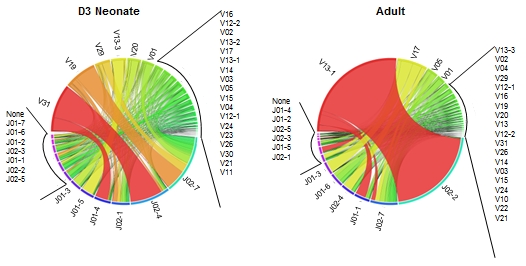Research Interests

Infectious diseases are a significant source of morbidity and mortality in neonates, particularly those hospitalized in the neonatal intensive care unit. While there are medical treatments and supportive measures for infected infants, little is known about their initial immune response to pathogens. The relative immaturity of the neonatal immune system has been attributed to decreased memory lymphocyte formation, delayed kinetics of a cytotoxic T cell (CTL) response, inadequate antigen presentation and defective neutrophil migration.
To better understand the development of the neonatal immune system, our lab has established a neonatal mouse model of influenza infection in order to determine the phenotypic and functional characteristics of both the innate and adaptive immune system. The Carey Lab seeks to identify mechanisms and potential modifiable risk factors for infants' susceptibility to infections using animal models, in vitro work and ex vivo studies on human cord blood. We have established a clinically relevant model of neonatal influenza virus infection in 3-day-old neonatal mice in order to focus on both the adaptive and innate immune response to viral infection.
T Cell Receptor Repertoire Development
Currently, there is little consensus regarding the most appropriate animal model to study acute infection and the virus-specific CD8+ T cell (CTL) responses in neonates. Using an acute influenza infection model, we have examined the TCR repertoire of the CTL response in neonatal and adult mice infected with influenza type A virus. Our work has shown a greatly reduced primary viral-specific CTL response in neonatal mice when compared to adult mice. However, when rechallenged with influenza as an adult, the mice have a surprisingly intact memory response to influenza. We are currently investigating the development of the T cell repertoire during repeat viral challenges using our in vivo neonatal model, as well as looking at human T cell development with cord blood samples from infants at different gestational ages. Ultimately, this work will provide useful information about appropriate vaccination strategies and the best vaccine adjuvants for preterm infants.

High-throughput sequencing was performed on sorted viral specific CTLs. Circos plots of frequencies of Vβ and Jβ usage and combinations of productive sequences shown for both 3-day-old neonates and adult animals. The width of the band is proportional to the frequency.
Carey AJ, Gracias DT, Thayer JL, Boesteanu AC, Kumova OK, Mueller YM, Hope JL, Fraietta JA, van Zessen DBH, Katsikis PD. Rapid Evolution of the CD8+ T cell receptor repertoire in neonatal mice. J Immunol. 2016; 196(6):2602-13. Copyright 2016. The American Association of Immunologists, Inc.
Pathogen Recognition Receptors in Influenza pathogenesis
In our preliminary work, we have determined that neonate mortality approaches 80 percent by eight days post-infection with influenza, with viral loads higher during early infection in neonates compared to adult mice. These findings suggest that the pulmonary neonatal innate host response is qualitatively different from that of adults. Recently, others have shown diminished immune responses to respiratory viral infection in adult mice given antibiotic pretreatment, demonstrating the importance of normal commensal organisms within the respiratory tract. They also found that intranasal administration of Lactobacillus rhamnosus (LGG) to adult mice significantly reduced the accumulated symptom rate and increased survival rates in influenza-infected mice, suggesting that LGG can protect host animals against influenza. Therefore, we have undertaken preliminary studies into the impact of LGG pretreatment of neonatal mice on their survival rate, and found improved survival. An important component to the innate immune response and pathogen recognition are pattern recognition receptors (PRR). PRRs play a critical role in initiating host responses to pathogens. We are currently investigating the role of various PRRs in the pathogenesis or protection of the neonatal mice during viral infection and the protective mechanism by which probiotics are conferring resistance to influenza infection. Probiotics are a promising therapeutic intervention for both premature and term infants.
Quick Links & Resources
Contact Us
The Carey Lab
Drexel University College of Medicine, Department of Microbiology and Immunology
245 North 15th Street Room 18119, Philadelphia, PA 19119
For more information, please contact
Alison Carey, MD, Principal Investigator
215.762.2149 | ajc327@drexel.edu
Back to Top